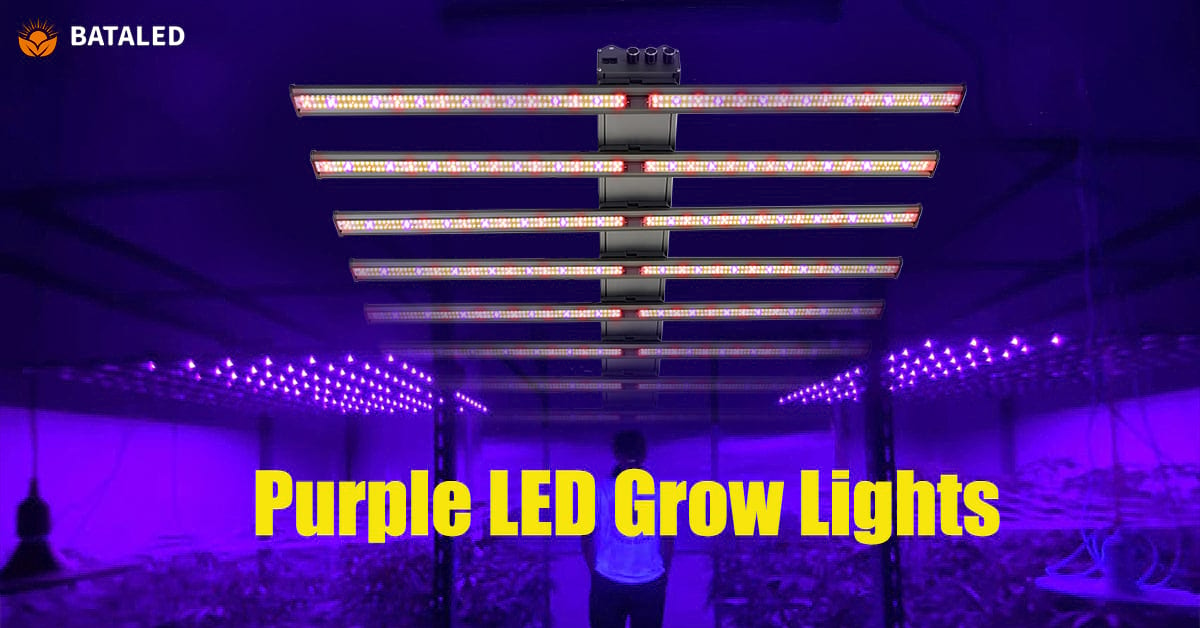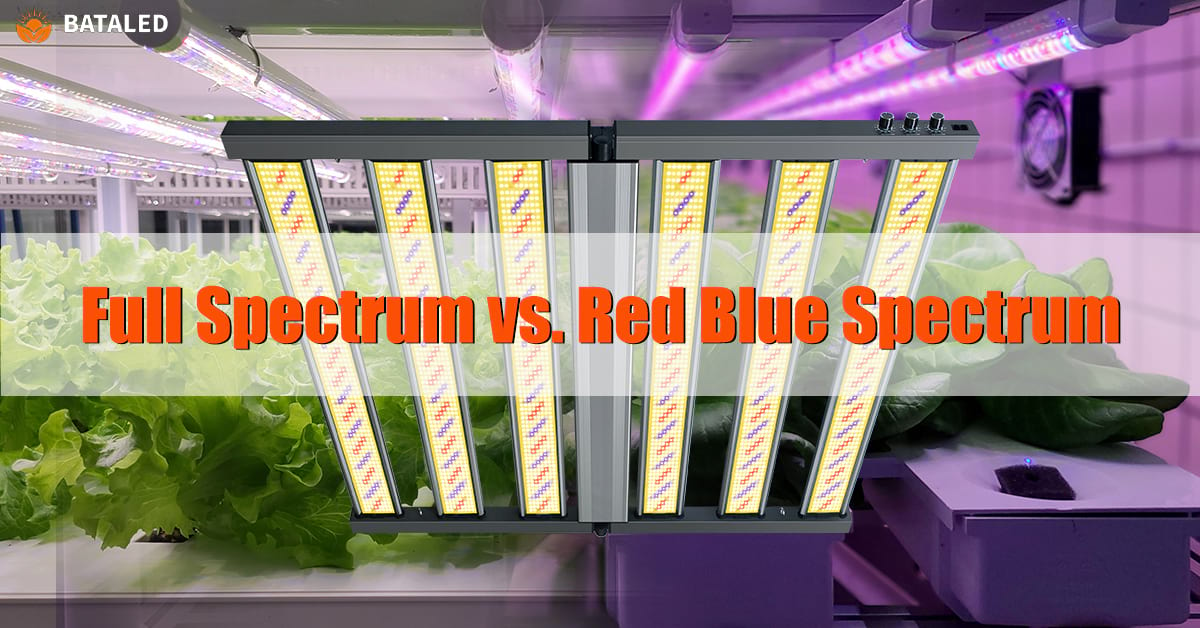LED vs HPS Grow Lights Ultimate Guide: Which One Is the Better Choice?
As a grower managing a commercial greenhouse or vertical farm, you’re constantly seeking ways to optimize results, reduce risks, and boost yields. Yet, the choice between the long-established HPS (High-Pressure Sodium) grow lights and the rising-star LED alternatives can be daunting.
This guide provides a comprehensive analysis of LED and HPS technologies, comparing their pros and cons to help you make an informed decision for your growing environment.
LED vs HPS Grow Lights – Key Differences
LED and HPS are the two most common lighting options for indoor cultivation. To understand their distinctions, let’s break down their design, functionality, efficiency, and more. This foundational knowledge will help you select the best fit for your setup.
What Is an HPS Grow Light?
HPS lights are high-intensity discharge (HID) lamps widely used in indoor horticulture, especially in greenhouse farming. At their core is a quartz or ceramic arc tube filled with sodium, mercury, and xenon gas. When powered, xenon ignites first, vaporizing sodium and mercury to produce a bright yellow-orange light (spectral peak: 560–590 nm). Note: HPS lights require a 10-minute warm-up period.
What Is an LED Grow Light?
LED grow lights utilize light-emitting diodes (LEDs) to deliver tailored spectra for plant growth. Ideal for indoor gardens, hydroponics, and vertical farms, they excel in low-natural-light environments. LEDs emit specific wavelengths when current passes through semiconductor chips. By combining diodes of different wavelengths (e.g., blue: 400–500 nm; red: 600–700 nm), they achieve full-spectrum output adaptable to various growth stages. LEDs offer instant startup and dimming capabilities.
LED vs HPS – Efficacy Comparison
Spectrum: LED Adjustability vs HPS Fixed Output
-
LED Advantages:
-
Full spectrum (400–700 nm), with customizable red/blue ratios for vegetative (blue-heavy) or flowering (red-heavy) phases.
-
Optional UV (280–400 nm) and far-red (700–750 nm) diodes enhance plant morphology and secondary metabolites.
-
-
HPS Limitations:
-
Narrow spectrum (550–750 nm, heavy in yellow/orange/red; minimal blue light), often requiring supplemental metal halide lamps.
-
Fixed output limits flexibility across growth stages.
-
PAR Efficiency: LED Dominance
-
LED: Higher photosynthetic photon efficacy (up to 3.0 µmol/J), uniform PPFD distribution (>90% coverage), and deeper canopy penetration.
-
HPS: Lower efficiency (1.5 µmol/J), with intense top-canopy light but poor lower-canopy penetration.
Test Data:
-
LEDs consume 30% less power yet deliver 10% more PAR than HPS.
-
Per-watt PAR output is 60% higher with LEDs.
-
Recent studies show LED-driven PAR levels (1,200 µmols) can boost yields by ~40% versus HPS (800 µmols).
Heat & Placement Flexibility
-
HPS: Requires 75 cm hanging height to avoid hotspots; excess heat demands ventilation.
-
LED: Can be placed 25 cm above canopy due to dispersed light and minimal radiant heat.
Energy Efficiency
-
LED: Converts 50–60% of energy into light; 40–60% lower power costs vs HPS.
-
HPS: Only 30–35% efficiency; 65% of energy wasted as heat, increasing cooling expenses.
Cost Comparison – LED vs HPS
Upfront Costs
-
HPS: $200–$500 per 1,000W system (lamp, ballast, reflector). Pros: Low entry cost. Cons: Requires added cooling.
-
LED: $600–$1,500 per 1,000W-equivalent. Pros: No extra cooling; spectrum tuning. Cons: Higher initial investment (may qualify for energy rebates).
Operational Costs (Annual, 1,000W Equivalent)
-
HPS: ~4,380 kWh/year ($525 at $0.12/kWh).
-
LED: ~2,628 kWh/year ($315), saving 40%.
Maintenance (5-Year Projection)
-
HPS: Bulb replacements ($50–$100 each, 1–2x/year); ballast/reflector upkeep adds 50–100% to initial cost.
-
LED: 50,000-hour lifespan; minimal maintenance (<10% of initial cost).
Yield Performance
Tomato Cultivation Case Study
-
HPS:
-
High red-orange light promotes flowering but lacks blue spectrum, limiting vegetative growth.
-
Yield: ~55 kg/m²; heat stress risks in summer.
-
-
LED:
-
Tunable spectra (e.g., 660 nm red + 450 nm blue) improve stem thickness, chlorophyll, and fruit weight (155g avg).
-
Yield: 11% higher with optimized temperature (+1°C).
-
Lifespan & Reliability
| Factor | HPS | LED |
|---|---|---|
| Rated Life | 10,000–24,000 hrs | 50,000–100,000 hrs |
| Real-World Life | 12,000–18,000 hrs | 50,000 hrs (L90) |
| Light Decay | 15%/year | <5%/year |
| Failure Mode | Bulb/ballast burnout | Gradual driver wear |
Why Upgrade from HPS to LED?
Key Reasons:
- Long-Term ROI: Higher upfront cost offsets by energy savings (40–60%), near-zero maintenance, and yield gains.
- Precision Growth: Spectrum/light intensity customization maximizes photosynthesis for each crop stage.
- Future-Proofing: Compact, low-heat LEDs suit vertical farms; smart controls enable automation (HPS cannot).
Transition Tips:
- Temperature Management: LEDs lack radiant heat—adjust room temps accordingly.
- VPD Monitoring: Balance humidity/post-LED conversion for optimal transpiration.
- HVAC/Dehumidification: LED efficiency may require added dehumidifiers (90% irrigation becomes vapor).
- Spectrum Balancing: Leverage UV/far-red for photomorphogenesis (beyond red/blue).
- Nutrient/Irrigation Tweaks: Adjust for PPFD-driven growth spurts, not just the light switch.
The Verdict
LEDs are the modern grower’s top pick for efficiency, tunability, and longevity—slashing bills, boosting yields, and enabling tech integration. HPS remains a budget-friendly option for small setups or cold climates needing supplemental heat.
Your Choice Depends On:
-
Long-term goals? LED’s ROI shines in vertical farms/precision agriculture.
-
Short-term/budget limits? HPS offers low entry costs + heating benefits.
CATEGORIES
Recommended Post

Where It’s Legal to Grow Cannabis: Ultimate Tips & Cultivation Laws
About Author—Jose Li
Jose, a senior content creator at BATA LED, brings over 5 years of expertise in LED grow light. He delivers valuable insights to help growers and farmers better understand LED grow light technology, empowering them to boost crop yields and quality with advanced lighting solutions.


